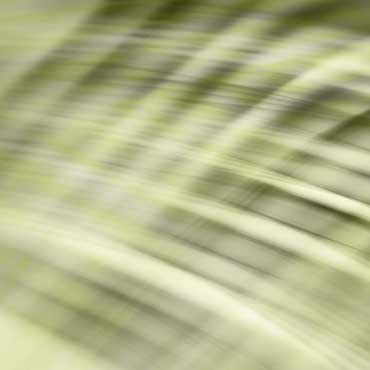Rendering and Animation Programs
 This document provides brief introductions for how to use three free graphic programs that your team may be interested in using in support of your Challenge work.
This document provides brief introductions for how to use three free graphic programs that your team may be interested in using in support of your Challenge work.
How to Use Scratch
Scratch: https://scratch.mit.edu/
Scratch is free, web-based platform designed by MIT with young learners in mind. Scratch has been widely used by educators and uses a simplified visual programming language of colored blocks that users can “drag and drop” in order to form the code that runs the program. Scratch was designed to make it easy for young learners to create simple games, interactive stories, or other media. Towards these ends, Scratch has a nice library of simple sounds, characters (“sprites”), and backgrounds, and it also makes it easy to import sounds and images from the web. But the sophistication of the visuals pales in comparison with such programs as Alice and Kodu. This can make Scratch a better choice for simple storytelling and arcade-style games, like the “Pong” remix shown below.
Scratch Project Interface
Scratch is also known for having a very active community of users and in many ways it doubles as a design studio and social media platform, where users can share their work and remix other users’ projects. Additionally, users are able to collaborate simultaneously on projects through studios, and Scratch even makes it easy to embed a project in a website.
The Scratch website offers a nice help section that goes over the basic operations and also provides short video tutorials on concepts like changing color, graphic effects, movement to a beat, costumes, music loops, and creating dialogue. You can find this section here: https://scratch.mit.edu/help/
Harvard’s Graduate School of Education has also put together a freely-available introductory computing curriculum using Scratch that includes a number of useful lessons: https://scratched.gse.harvard.edu/guide/
- movement to a beat, costumes, music loops, and creating dialogue. These videos can be found here: https://info.scratch.mit.edu/Video_Tutorials
How to Use GeoGebra
GeoGebra is free mathematics software that combines geometry, algebra, tables, graphing, and statistics into one easy-to-use package. Essentially, GeoGebra is a coordinate plane on which you can build lines, curves, and shapes either by drawing, entering a function or providing some points to plot. GeoGebra is an extremely useful tool for visualizing math problems and constructions, allowing you to drag objects and change parameters as you go along: no construction is ever finalized or unable to be changed. This software also exposes the relationship between the graphical and algebraic sides of a problem, with side-by-side “algebra view” and “graphics view”. If one part of a problem isn’t quite making sense, GeoGebra can help display a relationship between the various components of the problem in a clear, visual way.
The GeoGebra Quickstart: https://www.GeoGebra.org/help/GeoGebraquickstart_en.pdf
This is a short guide that offers step-by-step instructions for three different examples of using the program. This guide is useful for seeing some of the possibilities of what GeoGebra can do as well as familiarizing yourself with a few of the tools and commands GeoGebra offers.
Introduction to GeoGebra: https://www.GeoGebra.org/book/intro-en.pdf
This is a much longer guide outlining all of the basic commands and features of GeoGebra. There is a table of contents starting on page 4, so it is easy to find the specific task you would like to know how to do.
The GeoGebra Help Website: https://wiki.GeoGebra.org/en/
This portion of the GeoGebra website is full of various resources to help you, including a manual detailing of all the commands and tools of the program, as well as tutorials offering step-by-step instructions on specific topics.
How to Use SketchUp
SketchUp is a free 3D modeling program (although there is a ‘pro’ version that costs money) that launched in 2000. Google SketchUp is a free, relatively easy-to-learn 3D-modeling program geared toward hobbyists. While the learning curve is steeper than for some of the other programs above, SketchUp is a good choice for creating standard 3D models of houses/buildings, home additions, small-scale woodworking projects, civil engineering projects, and even space ships. Users can add details, textures, and glass to 3D models, and design with architectural accuracy.
To Download SketchUp:
- Go to: https://www.sketchup.com/
- Click on the blue button on the right that says “Download SketchUp”
- From here, click on the lower link that says “Download SketchUp”
- Choose what type of computer you are using and click “Agree and Download”
- The installer should download directly to your computer. Open up the installer and follow its instructions.
Getting Started:
- The SketchUp website offers a short guide that goes over the basic operations and vocabulary found here: https://support.google.com/sketchup/bin/answer.py?hl=en&answer=95079&topic=1700331&rd=1
More Support:
- The SketchUp website includes a detailed user interface that provides and in-depth explanation for all tools in SketchUp. This can be found here: https://support.google.com/sketchup/bin/topic.py?hl=en&topic=2457916&parent=2457746&ctx=topic
- Along the left side of the screen, various tools are broken down by category like drawing, construction, and camera.
- If you are more of a visual learner, the SketchUp website also provides video tutorials on getting started, as well as on individual tools. These videos can be found here: https://sketchup.google.com/intl/en/training/videos/new_to_gsu.html


